Pas de biographie disponible.
Compositeur Musique additionelle Librettiste Parolier Metteur en scène Chorégraphe Producteur création Producteur version
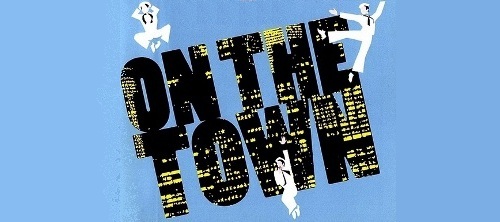
Musical
Musique: Leonard Bernstein • Paroles: Adolph Green • Betty Comden • Livret: Adolph Green • Betty Comden • Production originale: 14 versions mentionnées
Dispo: Résumé
Genèse:
Résumé: When three sailors disembark in New York City for their 24 hour leave, Ms. Turnstiles, an archeologist and a taxi-cab driver show them what it is to live on the town.
Création: 28/12/1944 - Adelphi Theatre (Broadway) - représ.
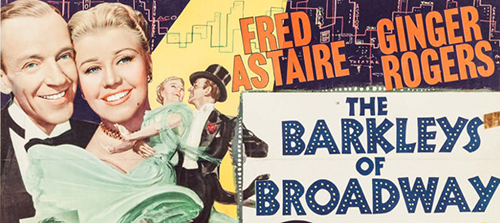
Film
Musique: George Gershwin • Harry Warren • Paroles: Ira Gershwin • Livret: Adolph Green • Betty Comden • Production originale: 1 version mentionnée
Dispo: Résumé Commentaire
Ce film musical en Technicolor de 1949, produit par l'unité Arthur Freed de la Metro-Goldwyn-Mayer, a réuni Fred Astaire et Ginger Rogers après dix ans d'interruption.
Genèse:
Résumé: À la sortie d’une grande première, Josh (Fred Astaire) et Dinah (Ginger Rogers) Barkley prennent part à une grande réception où ils rencontrent Jacques Barredout (Jacques François), dramaturge français émigré aux États-Unis. Jacques Barredout propose à Dinah dont il est amoureux, de devenir "sa" tragédienne dans sa dernière pièce. Il ignore délibérément Josh qui n'est pour lui qu'un amuseur. Après son succès, Dinah revient vers Josh, son amour et ils repartent dans leur domaine, la comédie musicale.
Création: 4/5/1949 - *** Film (***) - représ.
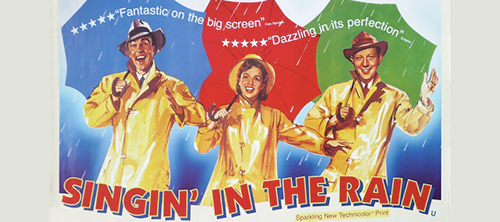
Film
Musique: Nacio Herb Brown • Paroles: Arthur Freed • Livret: Adolph Green • Betty Comden • Production originale: 1 version mentionnée
Dispo: Résumé Génèse
Genèse: Arthur Freed, the head of the "Freed Unit" at MGM responsible for the studio's glossy and glamorous musicals, conceived the idea of a movie based on the back catalog of songs written by himself and Nacio Herb Brown, and called in Betty Comden and Adolph Green from New York to come up with a story to tie the songs together and to write the script. Comden and Green first refused the assignment, as their agent had assured them that their new contract with MGM called for them to write the lyrics to all songs unless the score was by Irving Berlin, Cole Porter, or Rodgers and Hammerstein. After a two-week hold-out, their new agent, Irving "Swifty" Lazar, having looked over the contract, told them that the clause had been entirely an invention of their previous agent, and that there was no such language in the contract. After hearing this, Comden and Green began working on the story and script. Because many of the songs had originally been written during the time when silent films were giving way to "talkies", and musicals were popular with audiences, Comden and Green came up with the idea that the story should be set during that transitional period in Hollywood, an era they were intimately familiar with. When Howard Keel was mentioned as the possible lead, they tried to work up a story involving a star of Western films who makes a comeback as a singing cowboy, but they kept gravitating to a story about a swashbuckling romantic hero with a vaudeville background who survives the transition by falling back on his abilities as a song-and-dance man, a story which Gene Kelly was well-suited for. Kelly could not be approached at the time, as he was deeply immersed in An American in Paris (1951), which he was co-choreographing with Stanley Donen, and in which he was starring. Comden and Green continued to work on the script, and had at that time three possible openings for the film: a silent movie premiere, a magazine interview with a Hollywood star, and a star-meets-girl, star-loses-girl sequence. Unable to decide which to use or how to proceed, they had just decided to return their advance to MGM and admit defeat, when Betty Comden's husband arrived from New York and suggested that they combine all three openings into one. The script with the re-written opening was approved by Freed and by MGM's head of production Dore Schary, who had recently replaced Louis B. Mayer. By this time shooting on An American in Paris had completed, and Freed suggested that Kelly be given the script to read. Kelly and Donen responded enthusiastically, and immediately become involved in re-writes and adjustments to the script. Comden, Green, Kelly, and Donen were all old friends, and the process went smoothly. Besides the Freed-Brown songs, Comden and Green contributed the lyrics to "Moses Supposes", which was set to music by Roger Edens. Shortly before shooting began, "The Wedding of the Painted Dolls", which Comden and Green had "painfully wedged into the script as a cheering-up song" was replaced with a new Comden / Green song, "Make 'Em Laugh". After Comden and Green had returned to New York to work on other projects, they received word that a new song was needed for a love-song sequence between Kelly and Debbie Reynolds. The original had been a song-and-dance medley involving different sets in different soundstages on the studio lot, but they were asked for a romantic love song set in an empty sound stage, and it was needed immediately. Comden and Green provided such a scene for "You Are My Lucky Star" and sent it off to Hollywood.
Résumé: En 1927, Don Lockwood (Gene Kelly), star du cinéma muet, a pour partenaire Lina Lamont (Jean Hagen), actrice à la voix de crécelle. Celle-ci est persuadée que la relation amoureuse qui les unit à l'écran les unit aussi dans la vie. Ils sont engagés tous deux par les studios Monumental Pictures. Don est toujours accompagné de son partenaire du temps de ses débuts au vaudeville : Cosmo Brown (Donald O'Connor). Les jours du cinéma muet sont comptés lorsque sort Le Chanteur de jazz, premier film parlant de l'histoire du cinéma. Les Studios décident de tourner le prochain « Lockwood et Lamont », Le Spadassin royal (The Dueling Cavalier) selon ce nouveau procédé. Mais la voix de Lina Lamont est trop désagréable : elle a en effet une voix nasillarde et un cheveu sur la langue. Cosmo décide donc de la faire doubler par Kathy Selden (Debbie Reynolds), jeune danseuse à la voix chaleureuse, dont Don est déjà amoureux. Le film de cape et d'épée devient une comédie musicale, Le Chevalier chanteur (The Dancing Cavalier), et « un superbe ballet y évoque de manière onirique le parcours personnel de Don[2]. »
Création: 27/3/1952 - *** Film (***) - représ.
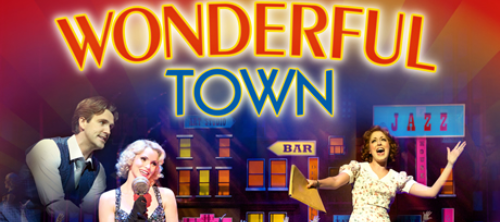
Musical
Musique: Leonard Bernstein • Paroles: Adolph Green • Betty Comden • Livret: Jerome Chodorov • Joseph Fields • Production originale: 8 versions mentionnées
Dispo: Synopsis Commentaire Génèse Liste chansons
Genèse: Wonderful Town debuted on Broadway at the Winter Garden Theatre on February 25, 1953 and ran for 559 performances, closing on July 3, 1954 and starred Rosalind Russell and Edie Adams. It was directed by George Abbott, choreographed by Donald Saddler and produced by Robert Fryer. A London Production opened Feb 25th, 1955 at The Prince's Theatre, where it ran for 207 performances. The production starred Pat Kirkwood as Ruth, Shani Wallace as Eileen, and Sid James as Wrack. It was produced by Jack Hylton, and Cyril Ornadel served as music director. The show was broadcast live as a television special on CBS in 1958, again starring Rosalind Russell as Ruth Sherwood and Jackie McKeever as Eileen Sherwood. New York City Center productions have starred Nancy Walker (1958), Kaye Ballard (1963) and Elaine Stritch (1966). Stock productions gave Eve Arden and Nanette Fabray, among others, the opportunity to play Ruth. Lauren Bacall starred in a 1978 tour. A production opened in the West End at the Queen's Theatre in August 1986 and closed in March 1987, after playing at the Watford Palace, with Maureen Lipman (Ruth) and Emily Morgan (Eileen). The City Center Encores! Staged concert was presented in May 2000, starring Donna Murphy and Laura Benanti and directed and choreographed by Kathleen Marshall. It received "some of the best reviews the in-concert series has seen in some time, with particular praise being doled out for star Donna Murphy."[2] A revival opened on Broadway at the Al Hirschfeld Theatre on November 23, 2003 and closed on January 30, 2005, after 497 performances. With direction and choreography by Kathleen Marshall, it starred Donna Murphy, and later Brooke Shields.
Résumé:
Création: 25/2/1953 - Winter Garden Theatre (Broadway) - 559 représ.
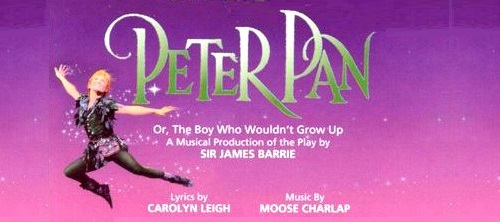
Musical
Musique: Jule Styne • Moose Charlap • Paroles: Adolph Green • Betty Comden • Carolyn Leigh • Livret: Production originale: 14 versions mentionnées
Dispo: Synopsis Génèse Liste chansons
Genèse: Several versions of Peter Pan were mounted early in the 20th century. In a nod to the original play, and the pantomime tradition it derives from, the title character of Peter Pan in the musical is usually played by a woman, including Mary Martin, Sandy Duncan and Cathy Rigby, among others. Producer Edwin Lester, founder and director of the Los Angeles Civic Light Opera, obtained the American rights to Peter Pan and adapted it as a play with music for Mary Martin. The show was not successful in its pre-Broadway West Coast tour, so director Jerome Robbins hired lyricists Comden and Green and composer Jule Styne to add more songs, including "Never Never Land," "Distant Melody" and several other numbers, turning the show into a full-scale musical. The musical, instead of using Barrie's original ending, in which Peter simply allowed Wendy and the other children to return home, includes an additional scene that Barrie had written later and titled An Afterthought. In this ending, Peter returns after many years to take Wendy back to Never Never Land for spring cleaning. He finds that he has been away so long that Wendy is now an adult, married woman with a daughter. Despondent at first, he is delighted when Wendy's daughter Jane offers to be his new mother, and instead takes her with him. The 1954 musical version of Peter Pan opened on October 20, 1954 at the Winter Garden Theatre in New York for a planned limited run of 152 performances. The show had been sold to NBC, which ensured that it was a financial success despite the limited run. It played its final performance on February 26, 1955. The revised score and Tony Award-winning performances by Martin and Ritchard made Peter Pan a success. A Broadway cast album was made of the songs, and is still in print today. The show opened in a busy Broadway season, competing with such notable shows as The Boy Friend, Fanny, Silk Stockings, and Damn Yankees. However, while still in tryouts in Los Angeles, a deal was made for the show to be broadcast on the NBC anthology series Producers' Showcase on March 7, 1955. The show closed so that it could be broadcast on television, although box office continued to be strong throughout the Broadway run. Television productions In 1954, Fred Coe, production manager for NBC in New York, began producing Producers' Showcase, a 90-minute anthology series that aired every fourth Monday for three seasons. One aim of the series was to broadcast expensive color spectaculars to promote the new color television system developed by NBC's parent company RCA. On March 7, 1955, NBC presented Peter Pan live as part of Producers' Showcase (with nearly all of the show's original cast) as the first full-length Broadway production on color TV. The show attracted a then-record audience of 65-million viewers, the highest ever up to that time for a single television program. Mary Martin and Cyril Ritchard had already won Tony Awards for their stage performances, and Martin won an Emmy Award for the television production. It was so well received that the musical was restaged live for television (again on Producers' Showcase) on January 9, 1956. Both of these broadcasts were produced live and in color, but only black-and-white kinescope recordings survive. Peter Pan was restaged on December 8, 1960, this time in a 100 minute version rather than 90 minutes (not counting the commercials), and with a slightly different cast because the original children had outgrown their roles. Producers' Showcase had long since gone off the air, so the 1960 production was intended as a "stand alone" special instead of an episode of an anthology series. Act II was split into two acts, for a total of five acts instead of three, to allow for more commercial breaks. This version was videotaped in color at NBC's Brooklyn studio. Martin was also starring in Broadway's The Sound of Music at the time. The production was directed for television by Vincent J. Donehue, who received a Director's Guild Award for it. Peter Foy re-created the signature flying sequences he had staged for the 1954 Broadway production and the two Producers' Showcase broadcasts. This 1960 version was rebroadcast in 1963, 1966 and 1973. The video tape of that production was restored and rebroadcast by NBC on March 24, 1989, then again in 1990, after which it went to the Disney Channel, where it was shown several times more. Unfortunately, beginning in 1989, the program was slightly cut to make room for more commercial time. Eliminated completely was a dance that Liza (the Darling family maid) and the animals of Neverland perform to an orchestral version of Never Never Land. Also eliminated was Mary Martin's curtain speech at the end thanking NBC for making the program possible, which, in the 1960, 1963, and 1966 telecasts led directly into the closing credits. Gone also, strangely enough, was the intertitle bearing the credit Peter Pan: Act III, but not the other intertitle credits, so that the show seemed to be performed in three acts, just as in the stage version. The screen credit Peter Pan: Act IV, however, did remain, so that it seemed as if there had been a technical oversight in not changing it. This 1960 production of Peter Pan was released on VHS home video on Aug 28, 1990 (not 1998, as stated on Amazon), on LV (date unknown), and on DVD on October 19, 1999. None of the three Mary Martin television versions of Peter Pan was telecast from a theatre with a live audience. All three were performed in the NBC studios. Later revivals The show was revived in 1979 on Broadway at the Lunt-Fontanne Theatre, produced by Nancy and Ronnie Horowitz, starring Sandy Duncan and George Rose, and ran for 554 performances. Duncan was nominated for the Best Actress Tony, and the show was nominated for Best Revival of a Musical. A third Broadway production was mounted in 1990, originally at the Lunt-Fontanne, running for 45 performances. A return engagement opened 10 months later, this time at the Minskoff Theatre, running for an additional 48 performances. Both engagements starred former Olympic gymnast Cathy Rigby as Peter; the first co-starred Stephen Hanan and the second J. K. Simmons. The production was nominated for Best Revival of a Musical at the 1991 Tonys, and Rigby was nominated for Best Actress. Rigby returned to Broadway as Peter Pan in 1998 at the Marquis Theatre, with Paul Schoeffler co-starring. This production ran for 48 performances. A return engagement with the same stars opened in 1999 at the George Gershwin Theatre and ran for 166 performances. This engagement was nominated for the 1999 Tony for Best Revival of a Musical. It was then recorded at the La Mirada Theater for broadcast in October 2000 on the A&E Network. The video release cuts the program to about 96 minutes and was shot using eight cameras, produced by Line By Line Productions for McCoy/Rigby Entertainment, directed by Gary Halvorson and produced by Marc Bauman. Designers of the production were John Iacovelli (set), Shigeru Yaji (costumes) and Martin Aronstein (lights). Flying illusions are by ZFX Inc. Craig Barna is the musical director. It reconceived the potentially offensive "Ugg-a-Wugg" song about Native Americans as a percussive dance number. The flying effects were changed to include some flights that were not practical to do in the theatrical version, such as the somersault flips during "I'm Flying", and electronically erasing the wires. Jack Noseworthy is the only male actor to have played Peter Pan on Broadway; he was an understudy in the revue Jerome Robbins' Broadway.
Résumé:
Création: 20/10/1954 - Winter Garden Theatre (Broadway) - représ.

Musical
Musique: Jule Styne • Paroles: Adolph Green • Betty Comden • Livret: Garson Kanin • Production originale: 0 version mentionnée
Dispo: Résumé Commentaire Génèse Liste chansons
Genèse: The show opened on Broadway at the St. James Theatre on December 26, 1960, transferred to the 54th Street Theatre on December 25, 1961 and closed on January 13, 1962 for a total of 400 performances. Scenic design was by Boris Aronson, costume design by Irene Sharaff with assistance from Florence Klotz, and choreography was by Marc Breaux and Dee Dee Wood. The London West End production opened at the Prince of Wales Theatre on October 12, 1961 and ran for 169 performances. It starred Max Bygraves, Maggie Fitzgibbon, Steve Arlen and Jan Waters. Encores! At New York's City Center presented a concert version in 1999, starring Nathan Lane, Brian Stokes Mitchell, Heather Headley and Randy Graff. The 42nd Street Moon theatre company, San Francisco, California production ran in August 2001.
Résumé: Hubie Cram is "a loser endlessly scheming to win big." His long-suffering patient wife Kay urges him to "Take a Job," while he plots. He finds three pals, Fatso O'Rear, Brains Berman and Skin Demopoulos, and they scheme to enter the juke-box business ("It's Legitimate"). Soon they have 300 juke-boxes, which they plan on selling to John Henry Wheeler, a record producer. Hubie discovers a naive singer, Tilda Mullen, and they plan their future ("Ambition"). At a fancy nightclub Hubie explains, and demonstrates, gangster's behavior that he learned from watching the Late Late Show. Kay compares her abandoned comfortable existence with the insecurity of life with Hubie ("Adventure"). Tilda and Wheeler fall in love ("Make Someone Happy"). In the end Hubie realizes that he has nothing except a wonderful marriage.
Création: 26/12/1960 - St. James Theatre (Broadway) - représ.
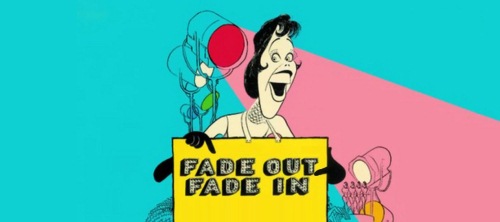
Musical
Musique: Jule Styne • Paroles: Adolph Green • Betty Comden • Livret: Adolph Green • Betty Comden • Production originale: 0 version mentionnée
Dispo: Résumé Génèse Liste chansons
Genèse: After six previews, the Broadway production opened on May 26, 1964 at the Mark Hellinger Theatre, and closed on April 17, 1965, after 274 performances. Directed by George Abbott and choreographed by Ernest Flatt, the cast included Carol Burnett as Hope Springfield, Dick Patterson as Rudolf, and Lou Jacobi as Lionel Z. Governor, with Jack Cassidy and Tina Louise in supporting roles. Cassidy was nominated for the Tony Award for Best Featured Actor in a Musical. Excellent reviews lead to a box office bonanza, and in its early weeks the show consistently outgrossed competitors Hello, Dolly! and Funny Girl. Then Burnett was sidelined due to a serious neck injury sustained in a taxi accident. The production temporarily shut down, then reopened with Betty Hutton in the lead. After recuperating, Burnett returned to the cast, but left shortly afterwards to participate in The Entertainers, a television variety series her husband Joe Hamilton was producing for CBS. When the show's producers threatened a breach-of-contract lawsuit, Burnett returned, but the financial losses sustained during her two absences proved to be insurmountable, and the production soon was shuttered. An original cast recording was released by Decca Records. When Burnett created her eponymous variety series in 1967, she hired Fade Out - Fade In choreographer Flatt and lead dancer Don Crichton to join the creative team.
Résumé: Chorus girl Hope Springfield, full of hope but not much talent, accidentally is given the starring role in a new movie. When the error is discovered, heads roll and the completed film is shelved. But Rudolf, the nephew of studio head Lionel Z. Governor, takes a liking to the girl and arranges for a sneak preview. The movie is a success, Hope (rechristened Lila Tremaine) becomes a star, and in true Hollywood happily-ever-after fashion she and Rudolf walk off into the sunset hand-in-hand.
Création: 26/5/1964 - Mark Hellinger Theatre (Broadway) - 274 représ.
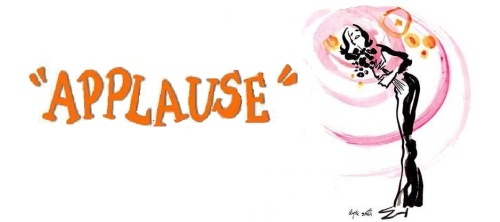
Musical
Musique: Charles Strouse • Paroles: Lee Adams • Livret: Adolph Green • Betty Comden • Production originale: 10 versions mentionnées
Dispo: Résumé Synopsis Commentaire Génèse Isnpiration Liste chansons
This musical is about show business, and the characters are typical of Broadway's glitter without being types. What is it that we're living for?", sing the impoverished "gypsies", the Broadway dancers, in Act 1 - and the answer? - "Applause, Applause". These lyrics state simply the motive of all the characters in the play; and this song is repeated periodically to remind us of the theme of the show.
Genèse: The Broadway production opened on March 30, 1970 at the Palace Theatre, and closed on July 27, 1972, after 896 performances and 4 previews. Directed and choreographed by Ron Field with the orchestrations of Philip J. Lang, the original cast included Lauren Bacall, Len Cariou, Penny Fuller, Bonnie Franklin, Lee Roy Reams, Robert Mandan, Brandon Maggart, Ann Williams, and Nicholas Dante. When Bacall's contract was up in 1971, the producers initially decided to cast film legend Rita Hayworth as Margo. Hayworth was very interested and flew to New York to audition for the role. However, unbeknownst to anyone at the time, Hayworth was suffering from the beginning stages of Alzheimer's disease and could not retain lyrics or dialogue. Ironically, Anne Baxter, who had portrayed Eve in the original film, replaced Bacall as Margo Channing. When Baxter departed the show in 1972, actress Arlene Dahl replaced her for one month before the show closed. The musical was later adapted for television, starring Bacall, with Larry Hagman replacing Len Cariou in the role of Bill Sampson. It aired in the United States on CBS on March 19, 1973. It has not been released commercially, but it is available for viewing at the Paley Center for Media (formerly The Museum of Television & Radio) in New York City and Beverly Hills, California. New York City Center's Encores! presented a new production of Applause February 7 to 10, 2008. It was directed by Kathleen Marshall and starred Christine Ebersole, Michael Park, Erin Davie, Megan Sikora, Mario Cantone, Tom Hewitt, Chip Zien, and Kate Burton.
Résumé: A la fin des années '60, Margo Channing est une star de Broadway. Mais, en secret, elle est parano au sujet de son âge. C'est alors qu'une jeune fille ambitieuse, Eve, débarque dans sa vie. Très vite, cette jeune fille admirative va devenir la plus grande ennemie de Margo et entrer en compétition avec elle. Eve devient l'understudy de Margo et décide de la sapper complètement afin qu'elle puisse jouer le rôle devant les critiques. A la fin, Eve est devenue une star et la carrière de Margo se fane. Cependant, Margo se rend compte qu'elle peut trouver encore le bonheur … auprès de l'homme qu'elle aime, Bill.
Création: 30/3/1970 - Palace Theatre (Broadway) - représ.
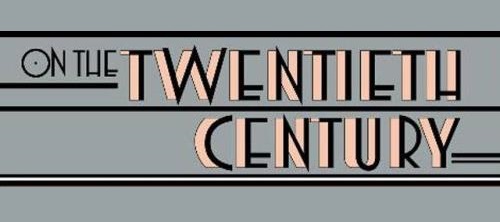
Musical
Musique: Cy Coleman • Paroles: Adolph Green • Betty Comden • Livret: Adolph Green • Betty Comden • Production originale: 4 versions mentionnées
Dispo: Résumé Synopsis Génèse Isnpiration Liste chansons
Genèse: Comden and Green based the musical on three works: the 1934 Howard Hawks film Twentieth Century; the original 1932 play of the same name by Ben Hecht and Charles MacArthur; and Hecht's and MacArthur's inspiration, Charles Bruce Millholland's unproduced play about his experiences working for theater producer David Belasco, Napoleon of Broadway. Cy Coleman, when asked to compose the score, initially refused. "I didn't want to do twenties pastiche – there was too much of that around," he recalled. "But when I realized the main characters had these larger-than-life personalities, I thought – ah, comic opera! Even the tikka-tikka-tikka patter of a locomotive train has the rhythm of comic opera." Coleman agreed to write the music for the show and produced an operetta-style score reminiscent of the works of Sigmund Romberg and Rudolf Friml. Coleman's music often evokes the movement of a train in its orchestration and rhythms. At times it echoes the chase music that used to accompany Mack Sennett's silent comedies, and traces of operatic Kurt Weill and romantic Jacques Brel can be heard as well. Following a Boston tryout at the Colonial Theatre, the Broadway production, directed by Hal Prince and choreographed by Larry Fuller, opened on February 19, 1978 at the St. James Theatre to mixed reviews. It ran for 11 previews and 449 performances. The opening night cast included John Cullum, Madeline Kahn, Imogene Coca, and Kevin Kline. After only nine weeks, Kahn departed the show. The New York Times reported, on April 25, 1978, that Kahn had left the show the day before, and "she said she was withdrawing because of damage to her vocal cords." She was replaced by understudy Judy Kaye, who had been playing a small supporting role, and the critics were invited to return. According to the New York Times, "Judy Kaye replaced Madeline Kahn...and bang, boom, overnight she is a star." They praised her performance, and Kaye's theatrical career took off. She later starred in the US tour opposite Rock Hudson. A London production, produced by Harold Fielding, and starring Keith Michell as Oscar Jaffe, Julia McKenzie as Lily Garland, Mark Wynter as Bruce Granit and Ann Beach as Mrs. Primrose, opened on March 19, 1980, at Her Majesty's Theatre, The Haymarket and ran for 165 performances. Dora Bryan had originally been cast as Mrs. Primrose, but was replaced by Beach a week before previews due to a difference of opinion with the American producers about her performance. The show has never been revived on Broadway; however, as part of an Actors Fund benefit, a one-night-only staged concert was held on September 26, 2005 at the New Amsterdam Theatre. The production starred Marin Mazzie as Lily, Douglas Sills as Oscar, Joanne Worley as Letitia Primrose and Christopher Sieber as Bruce, as well as appearances by Jesse Tyler Ferguson as Max Jacobs, Cheyenne Jackson as one of the "Life is Like a Train" porters, and Kathleen Turner as Imelda. The first inner London revival was staged at the Union Theatre, Southwark, running December 14, 2010 to January 15, 2011. Howard Samuels plays Oscar Jaffee and Rebecca Vere is Lily Garland. Directed by Ryan McBryde, with choreography by Drew McOnie and design by Diego Pitarch.
Résumé: After four flops in a row, megalomaniac theatre impresario, Oscar Jaffee, and his hapless entourage are on the run. Desperately trying to resuscitate his flat-lining career he books a carriage on the Twentieth Century Limited, the world’s most famous express train, bound for New York. In the next carriage resides his former sweetheart turned Hollywood starlet Lily Garland. Now Oscar has just 16 hours to entice the egotistical Lily back on to the stage, as the leading lady in his next show. Oscar’s financial ruin hangs in the balance and a jealous lover is on the loose. Offered funding by religious fanatic Letitia Peabody Primrose, Jaffee’s dreams fall into a glorious, and by turns hilarious, balancing act of keeping everyone happy. Set against a backdrop of the great American Depression of the 1930s, what unfolds is a tongue-in-cheek fairy tale of the pitfalls of producing theatre when cash is tight and private money comes at an unavoidable cost.
Création: 19/2/1978 - St. James Theatre (Broadway) - 449 représ.
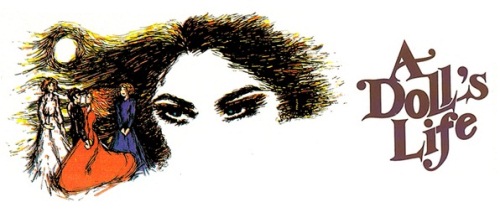
Musical
Musique: Larry Grossman • Paroles: Adolph Green • Betty Comden • Livret: Adolph Green • Betty Comden • Production originale: 0 version mentionnée
Dispo: Résumé Synopsis Génèse Isnpiration Liste chansons
Genèse: The Broadway production opened at the Mark Hellinger Theatre on September 23, 1982 and closed on September 26 after 5 performances and 18 previews. Directed by Hal Prince and choreographed by Larry Fuller with scenic design by Timothy O'Brien and Tazeena Firth, costume design by Florence Klotz, and lighting design by Ken Billington. The cast featured George Hearn, Betsy Joslyn, and Peter Gallagher. The York Theater Company, New York City, presented a staged concert in December 1994. Reviews were negative. According to The New York Times, "It was overproduced and overpopulated to the extent that the tiny resolute figure of Nora became lost in the combined mechanics of Broadway and the Industrial Revolution." According to John Kenrick, the musical had "an almost operatic score, but the book droned on about the unfairness of life and an overly-elaborate Hal Prince production only made matters worse." Despite its failure, the show received several Tony Award nominations, and an original cast recording was released on the Bay Cities label. Broadway wags dubbed the show "A Doll's Death." One even suggested "A Door's Life," in reference to the portal out of which Nora slams at the end of the original Ibsen play, and which 'danced' almost continually throughout the musical, far more interestingly than most of the rest of the action.
Résumé: Set within the framework of a contemporary rehearsal of Henrik Ibsen's classic play A Doll's House, it addresses the question of what might have transpired after Nora slammed the door and abandoned her tyrannical husband Torvald. Borrowing the fare from a young violinist, Otto, she takes the train to Christiania, where she accepts work in a cafe and soon becomes involved not only with Otto, but Eric Didrickson, the wealthy owner of shipping lines and fish canneries, and Johan Blecker, a lawyer, as well. Throughout the show, scenes in her new life mingle with intermittent flashbacks to the one she left behind.
Création: 23/9/1982 - Mark Hellinger Theatre (Broadway) - représ.
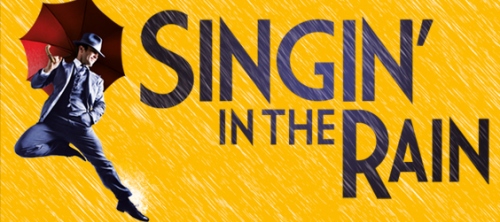
Musical
Musique: Nacio Herb Brown • Paroles: Arthur Freed • Livret: Adolph Green • Betty Comden • Production originale: 9 versions mentionnées
Dispo: Résumé Synopsis Génèse Isnpiration Liste chansons
Genèse: Original London Production The original West End production, directed by Tommy Steele and choreographed by Peter Gennaro, opened on June 30, 1983 at the London Palladium, where it ran until September 1985. The original cast included Steele as Don, Roy Castle as Cosmo, Danielle Carson as Kathy, and Sarah Payne as Lina and Julia. The original film's vocal score was embellished with additional tunes by Comden, Green, and Roger Edens, Dorothy Fields and Jimmy McHugh, George and Ira Gershwin, Johnny Mercer and Richard Whiting, and Cole Porter. Original Broadway Production The musical opened on Broadway at the George Gershwin Theatre on July 2, 1985 and closed on May 18, 1986 after 367 performances and 38 previews. Directed and choreographed by Twyla Tharp, the scenic design was by Santo Loquasto, costume design by Ann Roth, and lighting design by Jennifer Tipton. The cast included Don Correia as Don, Mary D'Arcy as Kathy, Peter Slutsker as Cosmo, and Faye Grant as Lina. The musical was dramatically revamped. 1994 UK Tour The 1983 London Palladium production was remounted in 1994 for an extensive tour of the United Kingdom. The new production, again directed by Steele, starred Paul Nicholas as Don, Shona Lindsay as Kathy, Tony Howes as Cosmo with Sarah Payne reprising her role as Lina from the original cast. Supporting cast included Matt Zimmerman and Mark Donovan. 2000 London Revival A new production of the musical was staged at the Olivier Theatre (Royal National Theatre), from June 2, 2000 to July 20, 2000 and again from December 18, 2000 to January 27, 2001. This production was a transfer from the West Yorkshire production, which ran from December 1999 to February 2000. The cast featured Zoe Hart as Kathy, Rebecca Thornhill as Lina, and Paul Robinson as Don. The direction was by Jude Kelly, and choreography was by Stephen Mear. Thornhill received an Olivier Award nomination for her performance. 2004 Sadler's Wells Revival The musical played at Sadler's Wells Theatre from July 29, 2004 to September 4, 2004, with direction by Paul Kerryson and choreography by Stephen Mear. 2012 London Revival The show was revived at the 2011 Chichester Festival Theatre, starring Adam Cooper, Daniel Crossley and Scarlett Strallen. It was choreographed by Andrew Wright who was nominated for an Olivier Award and won the WhatsOnStage award for his work. The show received positive reviews, and then transferred to London's West End, at the Palace Theatre, where Cooper, Crossley and Strallen all reprised their roles. From 18th February 2013 the role of Kathy Selden will be played by Louise Bowden. The production closes on June the 8th, 2013. 2013 UK Tour A UK tour shall follow the show closing on the West End starting on November 9 at the Manchester Opera House.
Résumé: Don Lockwood is a silent movies star with everything he could want - fame, adulation and even a well-publicised ‘romance’ with his co-star Lina Lamont. But Hollywood is about to change forever. There is rumour in the studio of a new kind of film, where the actors actually talk… and sing... and dance.
Création: 30/6/1983 - Palladium Theatre (Londres) - représ.

.png)
.png)





